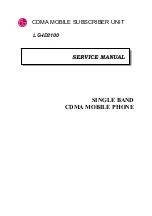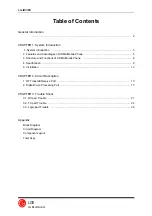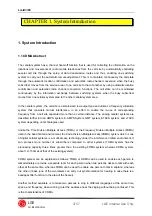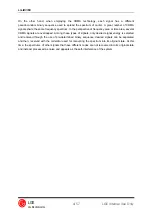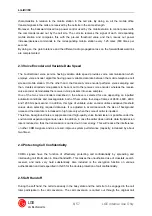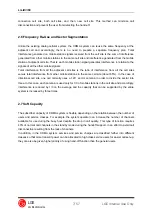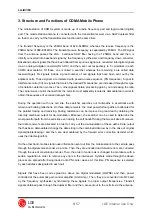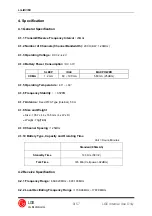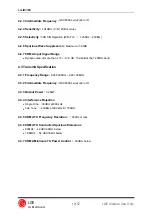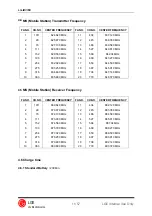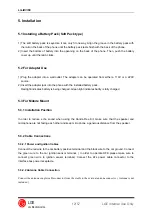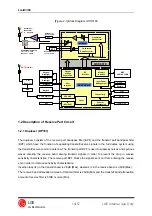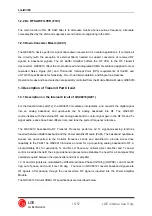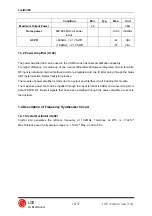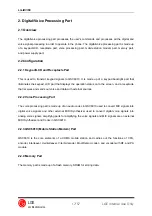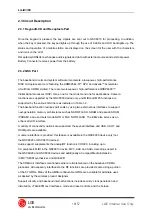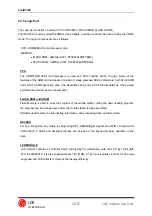
LG-ID3100
LGE
LG Electronics Inc.
2. Features and Advantages of CDMA Mobile Phone
2.1 Various Types of Diversities
When employing the narrow band modulation (30kHz band) that is the same as the analog FM
modulation system used in the existing cellular system, the multi-paths of radio waves create a
serious fading. However, in the CDMA broadband modulation(1.25MHz band), three types of
diversities (time, frequency, and space) are used to reduce serious fading problems generated from
radio channels in order to obtain high-quality calls.
Time diversity can be obtained through the use of code interleaving and error correction code
whereas frequency diversity can be obtained by spreading signal energy to more wider frequency
band. The fading related to normal frequency can affect the normal 200~300kHz among signal bands
and accordingly, serious affect can be avoided. Moreover, space diversity (also called path diversity)
can be realized with the following three types of methods.
First, it can be obtained by the duplication of cell site receive antenna. Second, it can be obtained
through the use of multi-signal processing device that receives a transmit signal having each different
transmission delay time and then, combines them. Third, it can be obtained through the multiple cell
site connection (Soft Handoff) that connects the mobile station and more than two cell sites at the
same time.
2.2 Power Control
The CDMA system utilizes the forward (from a base station to mobile stations) and backward (from
the mobile station to the base station) power control in order to increase the call processing capacity
and obtain high-quality calls. In case the originating signals of mobile stations are received by the cell
site in the minimum call quality level (signal to interference) through the use of transmit power control
on all the mobile stations, the system capacity can be maximized.
If the signal of mobile station is received too strong, the performance of that mobile station is improved.
However, because of this, the interference on other mobile stations using the same channel is
increased and accordingly, the call quality of other subscribers is reduced unless the maximum
accommodation capacity is reduced.
In the CDMA system, forward power control, backward open loop power control, and closed loop
power control methods are used. The forward power control is carried out in the cell site to reduce the
transmit power on mobile stations less affected by the multi-path fading and shadow phenomenon and
the interference of other cell sites when the mobile station is not engaged in the call or is relatively
nearer to the corresponding cell site. This is also used to provide additional power to mobile stations
having high call error rates, located in bad reception areas or far away from the cell site.
The backward open loop power control is carried out in a corresponding mobile station; the mobile
station measures power received from the cell site and then, reversely increases/decreases transmit
power in order to compensate channel changes caused by the forward link path loss and terrain
5/57
LGE Internal Use Only


